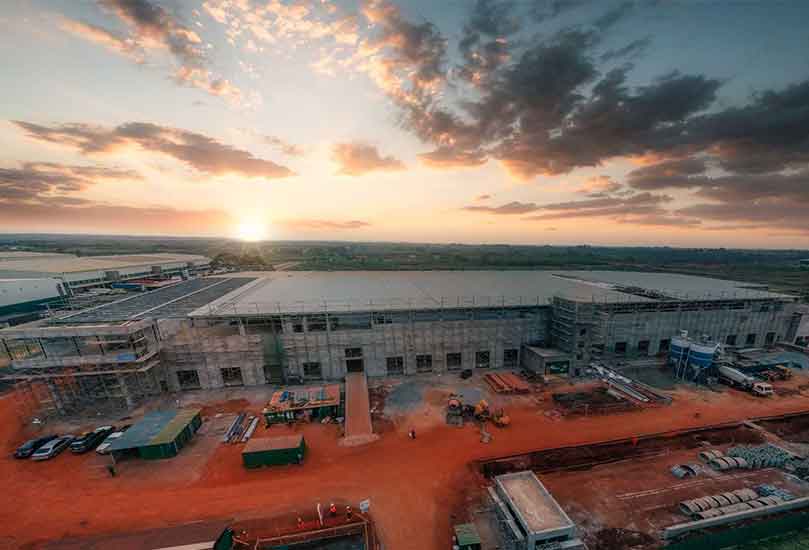In today's global supply chain, cold storage facilities play a critical role in preserving perishable goods and ensuring food safety. Whether you're expanding your existing operations or building a new cold storage facility from the ground up, understanding the fundamentals of cold storage construction is essential for success. This comprehensive guide explores the key considerations, materials, and technologies that go into creating efficient, sustainable, and cost-effective cold storage solutions.
Why Cold Storage Construction Demands Specialized Knowledge
Cold storage facilities aren't just warehouses with coolers. They're sophisticated structures designed to maintain specific temperature ranges consistently while maximizing energy efficiency. The unique challenges of cold storage construction include:
- Creating an airtight thermal envelope
- Managing moisture and vapor barriers
- Preventing frost heave in foundations
- Accommodating specialized mechanical systems
- Meeting strict food safety regulations
- Balancing energy efficiency with operational needs
Key Components of Cold Storage Construction
1. Insulation Systems
The heart of any cold storage facility is its insulation system. Modern cold storage construction typically utilizes:
- Insulated Metal Panels (IMPs): These pre-fabricated panels combine interior and exterior metal facings with an insulating foam core, offering excellent thermal performance and quick installation.
- Polyurethane and Polyisocyanurate Foams: These materials provide high R-values per inch, making them ideal for applications where space is at a premium.
- Vapor Barriers: Critical for preventing moisture migration that could compromise insulation effectiveness and create ice buildup.
Proper installation of these systems is crucial, as even small gaps or thermal bridges can significantly impact energy consumption and temperature stability.
2. Flooring Solutions
Cold storage floors face unique challenges, particularly in freezer applications where temperatures can drop well below freezing. Effective flooring solutions include:
- Insulated Floor Systems: Preventing ground frost and heave through under-floor heating or ventilation systems
- Reinforced Concrete: Specially designed to withstand temperature fluctuations and heavy traffic
- Slip-Resistant Finishes: Enhancing safety in potentially wet conditions
- Thermal Breaks: Preventing cold transfer between different areas of the facility
3. Refrigeration Systems
Selecting the right refrigeration technology is a critical decision in cold storage construction. Options include:
- Ammonia Systems: Highly efficient but requiring specialized safety measures
- CO2 Systems: Environmentally friendly with excellent low-temperature performance
- Freon-Based Systems: Lower initial cost but typically less efficient
- Hybrid Systems: Combining technologies to optimize performance and efficiency
The design must account for current needs while allowing flexibility for future expansion or technological upgrades.
4. Doors and Access Points
Doors represent potential weak points in the thermal envelope and high-traffic areas that impact operational efficiency:
- High-Speed Doors: Minimizing air exchange during access
- Air Curtains and Vestibules: Creating buffer zones between temperature zones
- Dock Seals and Shelters: Preventing energy loss during loading/unloading
- Door Heaters: Preventing freezing and ensuring reliable operation
The design must account for current needs while allowing flexibility for future expansion or technological upgrades.
Special Considerations in Cold Storage Construction
Energy Efficiency
With refrigeration accounting for up to 70% of a cold storage facility's energy consumption, efficiency measures are both environmentally and economically essential:
- LED Lighting: Reducing heat load while improving visibility
- Motion Sensors: Minimizing unnecessary energy use
- Variable Frequency Drives (VFDs): Optimizing refrigeration system performance
- Heat Recovery Systems: Capturing waste heat for use elsewhere in the facility
- Building Automation: Fine-tuning operations based on actual conditions
Food Safety Compliance
Modern cold storage construction must address increasingly stringent food safety regulations:
- Cleanable Surfaces: Non-porous materials that resist bacterial growth
- Proper Drainage: Preventing standing water
- Air Quality Management: Controlling humidity and airborne contaminants
- Temperature Monitoring Systems: Ensuring continuous compliance
- Sanitary Design Principles: Eliminating harborage points for contaminants
Future-Proofing Your Investment
Cold storage needs evolve with business growth and changing regulations. Forward-thinking construction incorporates:
- Expandable Design: Allowing for future capacity increases
- Flexible Storage Zones: Accommodating changing product mixes
- Technology Infrastructure: Supporting advanced inventory and monitoring systems
- Sustainable Features: Preparing for increasingly strict environmental regulations
Choosing the Right Cold Storage Construction Partner
The specialized nature of cold storage construction makes selecting an experienced partner critical to project success. Look for contractors with:
- Specific cold storage construction experience
- Knowledge of current refrigeration technologies
- Understanding of applicable regulations
- Proven track record with similar facilities
- Design-build capabilities for integrated solutions
Ready to Start Your Cold Storage Construction Project?
Proper planning and expert guidance are essential for successful cold storage construction. At Cold Solutions Services, we bring decades of specialized experience to every project, ensuring your facility meets today's needs while preparing for tomorrow's challenges.
Contact our team today for a comprehensive consultation on your cold storage construction needs. We'll help you navigate the complexities of design, material selection, regulatory compliance, and energy optimization to create a facility that enhances your operations and delivers long-term value.
